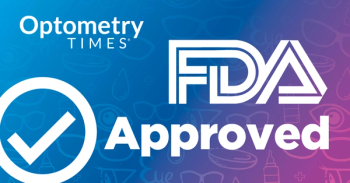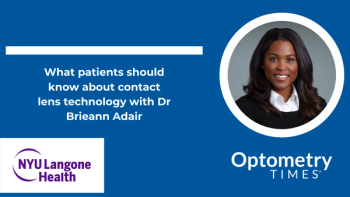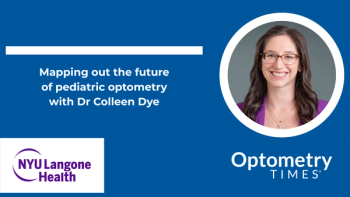The treatment of dry eye disease (DED) and ocular surface disease (OSD) has always been a passion of mine, which has culminated in my recent transition to focusing exclusively on these conditions in a dedicated DED/OSD private practice. One of the things that has remained constant, however, is my use of the Tear Film and Ocular Surface Society (TFOS) International Dry Eye Workshop (DEWS) report to augment my treatment strategies. For years, it has offered a road map to not only defining DED but also strengthening our understanding of the multifactorial effects it has on the ocular surface.1
Introduction of the DEWS guidelines
TFOS published its landmark DEWS report in 2007,1 drawing inspiration from a definition of DED established by the 1995 National Eye Institute/Industry Workshop on Clinical Trials in Dry Eyes that stated, “Dry eye is a disorder of the tear film due to tear deficiency or excessive tear evaporation, which causes damage to the interpalpebral ocular surface and is associated with symptoms of ocular discomfort.”
In the 2007 DEWS report, the definition was updated to offer the first consensus-based explanation of DED that accounted for new knowledge about the roles of tear hyperosmolarity and the impact of inflammation on the ocular surface and visual function, labeling it “a multifactorial disease of the tears and ocular surface that results in symptoms of discomfort, visual disturbance, and tear film instability with potential damage to the ocular surface. It is accompanied by increased osmolarity of the tear film and inflammation of the ocular surface.”1
A decade later, the TFOS DEWS II refined the definition of DED by further emphasizing the loss of tear film homeostasis, explicitly including neurosensory abnormalities as key etiologic factors, alongside tear instability, hyperosmolarity, and inflammation.2 Most recently, the DEWS III report3,4 continues the trajectory of refinement with updated diagnostic frameworks and treatment paradigms that reflect the multifactorial drivers of the disease. Although the way we think about DED and how we diagnose and manage the condition may not shift significantly with the release of the DEWS III report, it helps focus our attention on the importance of applying a driver-based approach to disease management that results in smarter, more personalized dry eye care. The DEWS III guidelines now compel us to consider not just whether someone has DED but also what is driving it and how it is impacting their visual function and quality of life. This encourages a more personalized treatment plan, inviting clinicians to match therapy to the dominant mechanisms at play rather than simply looking at disease severity.
A more clinically useful definition
The elaborated DEWS III moves beyond the old binary of aqueous-deficient vs evaporative DED to offer a dynamic, driver-based framework encouraging clinicians to consider the intricacies of tear film instability, homeostatic dysregulation, eyelid abnormalities, and neurosensory changes as core mechanisms of a patient’s individual condition (Table). It also recognizes visual disturbance and visual impairment as core components of DED, better reflecting what our patients are reporting.
DEWS III introduces a 2-level classification system. The first level identifies DED through measures of tear film instability, hyperosmolarity, ocular surface damage, and symptoms. The second level is focused on discerning the underlying causes of these changes. The latter reflects what we already see in practice: Multiple drivers of DED almost always coexist. This shift helps us avoid the trap of forcing patients into categories that don’t fully explain their symptoms, such as the overly simplistic aqueous-deficient vs evaporative dichotomy or treating only part of their condition. It reorients us toward a driver-based framework that includes considering the following mechanisms: tear film instability; eyelid-related dysfunction, such as meibomian gland dysfunction and Demodex blepharitis; abnormal blinking mechanics; inflammation; neurosensory abnormalities; and systemic conditions.
DEWS III also offers a simplified, standardized diagnostic approach centered on the signs and symptoms of DED. Symptoms may be evaluated with an updated Ocular Surface Disease Index-6 questionnaire, whereas signs should be confirmed by at least 1 of the following:
- Tear film instability (ie, tear breakup time)
- Hyperosmolarity
- Ocular surface staining
The DEWS III guidelines make it clear that high-tech diagnostics and a fully equipped dry eye clinic are not requirements for diagnosing DED. This democratizes dry eye care, allowing any clinician to make a confident diagnosis using accessible tools. That said, the update also encourages us to go beyond the thinking that positive staining alone confirms DED. For example, if a patient presents with corneal staining but no symptoms, we must consider other ocular surface diseases as a cause (in this case, neurotrophic keratitis). Likewise, if a patient presents with burning or fluctuating vision but shows no obvious signs, neurosensory dysfunction may be the driver.
From step therapy to targeted care
DEWS III treatment algorithm explained
The DEWS III treatment algorithm does not follow a conventional staged or stepwise approach beyond recommending foundational therapies such as lifestyle and environmental modifications and tear film supplements as first-line treatments. Rather, it provides a driver-driven management strategy that addresses the underlying causes of DED.4 Because DED is multifactorial, this often means a patient will use multiple treatments simultaneously. For instance, a patient with Sjögren’s disease and meibomian gland dysfunction may be treated with Ω-3 supplements, cyclosporine ophthalmic solution 0.1% (Vevye; Harrow), eyelid hygiene, and artificial tears for palliative use at the same time to fully manage all the drivers of their condition.
The old stepwise treatment algorithm started with artificial tears and escalated slowly to other therapies. This did not reflect clinical reality. Our patients don’t experience DED in neat little steps, and our treatment shouldn’t be so rigid, either. DEWS III proposes a driver-based treatment algorithm that encourages us to identify the underlying causes of the disease and treat them appropriately (see Sidebar).
This approach more accurately represents clinicians’ practice patterns. Most of my patients have 3 to 4 coexisting ocular surface conditions. Although foundational treatments such as artificial tears, Ω-3 supplements, eyelid hygiene, blink training, and environmental modifications are still part of my baseline protocol, adding targeted therapies leads to better and faster outcomes for my patients and a more comprehensive treatment approach. For example, if I see inflammation driving tear film disruption and ocular surface abnormalities, I will prescribe an immunomodulator. If I see eyelid disorders, like blepharitis or meibomian gland dysfunction, I implement eyelid hygiene and consider in-office therapies, such as intense pulsed light or radiofrequency therapy. For exposure-related issues, I look at eyelid closure, sleep position, and ocular surface protection at night.
DEWS III also supports earlier intervention, for example, the use of an anti-inflammatory agent when homeostasis is threatened rather than only after signs appear. This helps promote earlier tear film stabilization.
Because inflammation is involved in most cases of dry eye, I often initiate anti-inflammatory therapy early. Cyclosporine, a common immunomodulator, is hydrophobic and therefore exhibits poor solubility in water, posing a challenge for its administration. However, formulations such as cyclosporine ophthalmic solution 0.1% (Vevye; Harrow) use an amphiphilic semifluorinated alkane (perfluorobutylpentane), which allows easy dissolution, better ocular surface spreading, and an increased residence time of up to 8 hours. Consequently, it results in enhanced cyclosporine penetration and improved comfort.5 Cyclosporine ophthalmic solution 0.1% is the only cyclosporine formulation labeled for the treatment of both signs and symptoms of DED, and the DEWS III guidelines now cite it as an option for both signs and symptoms of DED, accordingly.3,4
I use cyclosporine ophthalmic solution 0.1% when I need reliable inflammation control with an excellent patient tolerance profile. Further, it’s one of my first choices in patients who need long-term inflammation management without the adverse effects associated with chronic steroid use. That said, I also routinely use other immunomodulators such as lifitegrast ophthalmic solution 5% (Xiidra; Bausch + Lomb), cyclosporine ophthalmic solution 0.09% (Cequa; Sun Ophthalmics), and cyclosporine ophthalmic emulsion 0.05% (Restasis; AbbVie), as all have a place in my armamentarium. I appreciate that some patients respond to one agent but not another, further validating the emphasis on individualized care in the DEWS III guidelines.
Don’t overthink it
For those familiar with DEWS II, transitioning to DEWS III is more evolution than revolution. My advice is to start simple. When you see a patient with DED, systematically evaluate the eyelids and lashes, tear film, cornea, conjunctiva, and neurosensory system. Then ask yourself: Why is this patient experiencing symptoms? That simple question will guide your treatment plan better than an outdated stepwise approach.
DEWS III redefines how we talk about, diagnose, and treat DED and reminds us that it is a constellation of disorders that often coexist. By shifting from thinking of DED in stages of severity to considering what is driving the disease, DEWS III helps us match therapy to mechanism, making it easier to select the right treatments sooner.
References
The definition and classification of dry eye disease: report of the Definition and Classification Subcommittee of the International Dry Eye Workshop (2007). Ocul Surf. 2007;5(2):75-92. doi:10.1016/s1542-0124(12)70081-2
Jones L, Downie LE, Korb D, et al. TFOS DEWS II management and therapy report. Ocul Surf. 2017;15(3):575-628. doi:10.1016/j.jtos.2017.05.006
Stapleton F, Argüeso P, Asbell P, et al. TFOS DEWS III digest. Am J Ophthalmol. 2025;279:451-553. doi:10.1016/j.ajo.2025.05.040
Jones L, Craig JP, Markoulli M, et al; TFOS Collaborator Group. TFOS DEWS III: management and therapy. Am J Ophthalmol. 2025;279:289-386. doi:10.1016/j.ajo.2025.05.039
Agarwal P, Korward J, Krösser S, Rupenthal ID. Preclinical characterization of water-free cyclosporine eye drops - factors impacting ocular penetration ex vivo and in vivo. Eur J Pharm Biopharm. 2023;188:100-107. doi:10.1016/j.ejpb.2023.05.005




















































.png)


